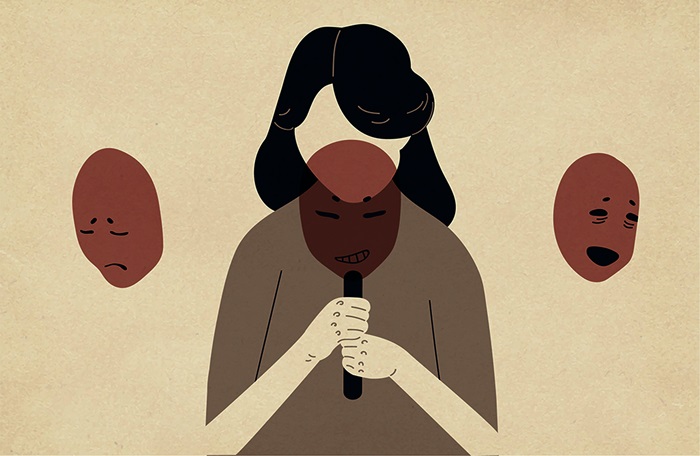Histrionic personality disorder (HPD) and borderline personality disorder (BPD) are two personality disorders that can have significant impacts on an individual’s thoughts, emotions, and behaviors. While these disorders share some similarities, they are distinct conditions with different symptoms and diagnostic criteria. In this article, we will explore the differences between histrionic and borderline personality disorder, including their symptoms, causes, and treatment options.
Symptoms of Histrionic Personality Disorder
Histrionic personality disorder is characterized by a pattern of excessive attention-seeking behavior and emotional expression. Individuals with HPD may exhibit the following symptoms:
Attention-seeking behavior: Individuals with HPD may engage in attention-seeking behavior, such as dressing provocatively or behaving in a dramatic or flamboyant manner.
Emotional instability: Individuals with HPD may experience intense and rapidly shifting emotions, including anxiety, depression, and anger.
Impulsivity: Individuals with HPD may engage in impulsive behavior, such as reckless spending or substance abuse.
Need for approval: Individuals with HPD may have a strong need for approval and validation from others.
Shallow relationships: Individuals with HPD may have difficulty forming deep and meaningful relationships, instead preferring to maintain shallow and superficial connections.
Overly dramatic or theatrical behavior: Individuals with HPD may engage in overly dramatic or theatrical behavior, such as exaggerated expressions of emotion or attention-seeking gestures.
Symptoms of Borderline Personality Disorder
Borderline personality disorder is characterized by a pattern of unstable emotions, self-image, and interpersonal relationships. Individuals with BPD may exhibit the following symptoms:
Intense and unstable emotions: Individuals with BPD may experience intense and rapidly shifting emotions, including anxiety, depression, and anger.
Impulsivity: Individuals with BPD may engage in impulsive behavior, such as reckless spending or substance abuse.
Fear of abandonment: Individuals with BPD may have a strong fear of abandonment and may engage in behaviors to prevent it, such as clinging to others or becoming angry when they feel rejected.
Unstable self-image: Individuals with BPD may have an unstable self-image and may experience feelings of emptiness or worthlessness.
Intense and unstable relationships: Individuals with BPD may have intense and unstable relationships, characterized by idealization and devaluation of others.
Self-harm or suicidal behavior: Individuals with BPD may engage in self-harm or suicidal behavior, particularly in response to feelings of abandonment or rejection.
Causes of Histrionic and BPD
The causes of histrionic and borderline personality disorder are not fully understood. However, research suggests that both disorders may be influenced by a combination of genetic, environmental, and social factors.
Genetic Factors
Studies have shown that genetic factors may play a role in the development of both histrionic and borderline personality disorder. For example, research has found that individuals with a family history of HPD or BPD may be more likely to develop these disorders themselves.
Environmental Factors
Environmental factors, such as childhood trauma or abuse, may also contribute to the development of histrionic and borderline personality disorder. For example, individuals who experienced neglect or emotional abuse as children may be more likely to develop BPD.
Social Factors
Social factors, such as cultural and societal norms around gender and sexuality, may also contribute to the development of histrionic personality disorder. For example, women may be more likely to be diagnosed with HPD due to societal expectations around femininity and emotional expression.
Treatment Options for Histrionic and BPD
There are several treatment options for histrionic and borderline personality disorder, including:
Therapy: Therapy can be an effective treatment for both histrionic and borderline personality disorder. Cognitive-behavioral therapy (CBT) and dialectical behavior therapy (DBT) are commonly used to treat these disorders.CBT helps individuals identify and change negative thought patterns and behaviors that contribute to their disorder. DBT is a type of therapy specifically designed to treat BPD, and focuses on teaching individuals skills to manage their emotions and improve their relationships.
Medication: Medication can be used to treat certain symptoms of histrionic and borderline personality disorder, such as depression and anxiety.
Lifestyle changes: Certain lifestyle changes, such as reducing substance use and engaging in healthy coping mechanisms, can help individuals manage their symptoms.
Support groups: Support groups can provide emotional support and a sense of belonging for individuals with histrionic and borderline personality disorder.
Conclusion
Histrionic and borderline personality disorder are distinct personality disorders with different symptoms and diagnostic criteria. While both disorders share some similarities, such as impulsivity and emotional instability, they are characterized by different patterns of behavior and emotional expression. The causes of histrionic and borderline personality disorder are not fully understood, but research suggests that genetic, environmental, and social factors may all play a role.
Treatment options for histrionic and borderline personality disorder include therapy, medication, lifestyle changes, and support groups. It is important to discuss any concerns about personality disorders with a healthcare provider to determine the best course of treatment. With proper treatment, individuals with histrionic and borderline personality disorder can manage their symptoms and improve their overall well-being.
Related topics:


